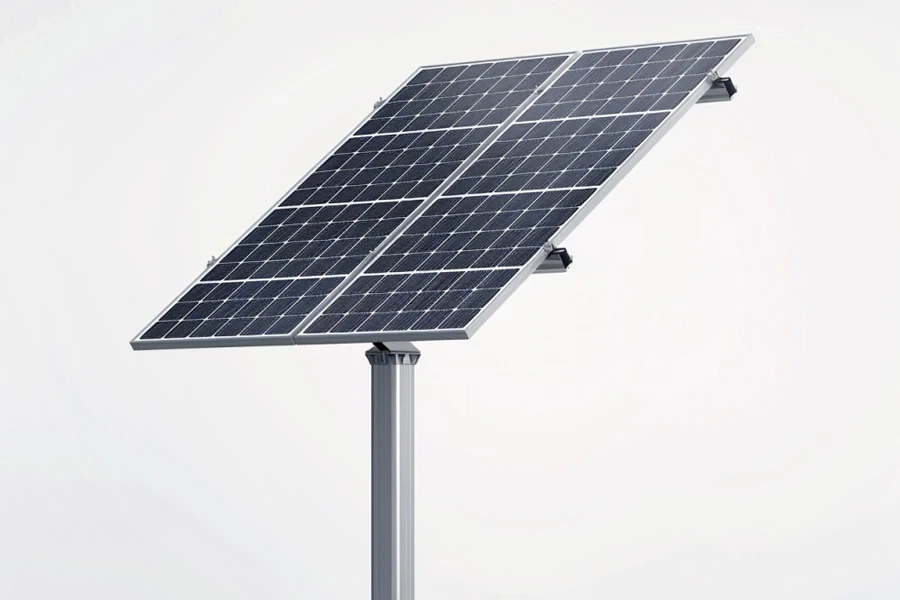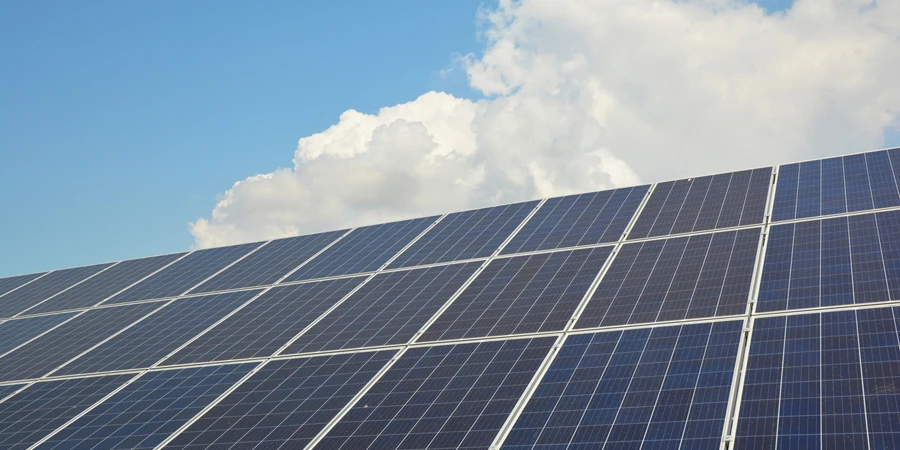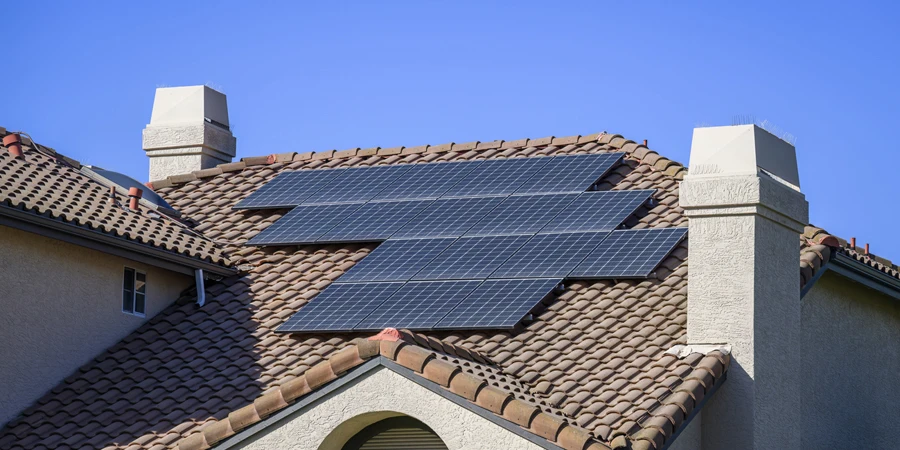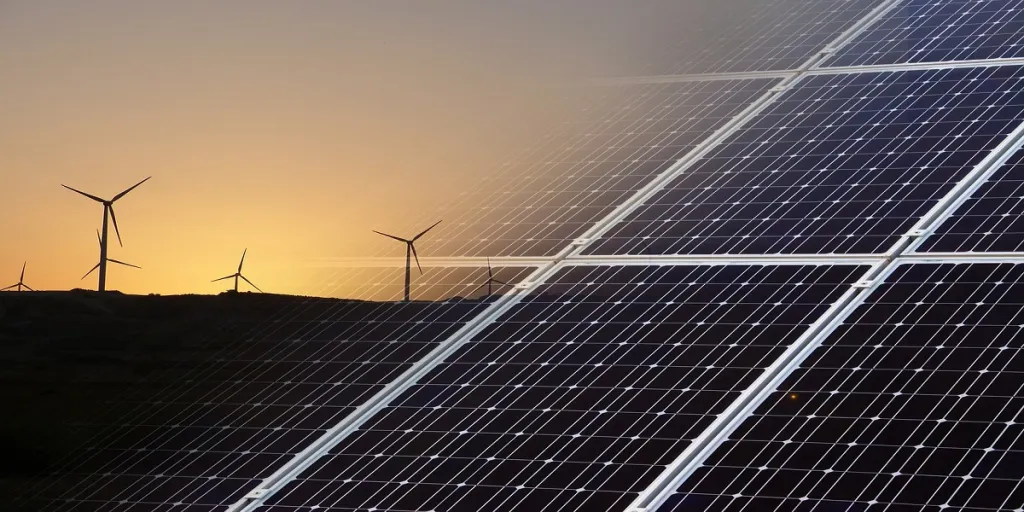A solar tracking system can produce 10% to 60% more energy output than a fixed system. In fact, an estimate across most sources is that around 30% to 40% more solar energy is produced using solar trackers. This means that as the solar energy industry grows, the demand for solar tracking systems is expected to increase exponentially.
The reason why these trackers increase output is that they help minimize the incidence angle between the sunlight and PV panels, also known as cosine error. The lower the angle, the higher the amount of energy that will be produced. This means higher efficiency, lower costs, and many other benefits for end customers.
Businesses aiming to supply solar trackers have an opportunity to benefit from this positive outlook. So read on for a retailer’s guide to the main kinds of solar trackers and how to source the best options for your buyers in 2024!
Table of Contents
Overview of the solar tracking system market
5 major types of solar tracking systems
How to choose the best solar trackers in 2024
Rounding up
Overview of the solar tracking system market
A solar tracking system helps to achieve maximum solar energy production by tracking the sun and changing position accordingly. It helps increase energy production, reduce costs, and support grid integration. The global market size of solar tracking systems is estimated to be USD 36.62 billion in 2024. By 2029, it is expected to reach USD 100.51 billion.
As the solar energy market size grows, the demand for optimizing energy production has also skyrocketed amongst enterprises and individual users. As a result, solar tracking systems are becoming more popular globally, and this trend is only expected to continue as many countries turn to cleaner energy sources.
5 major types of solar tracking systems
Manual solar trackers
As the name suggests, these solar tracking systems require someone to manually tilt the PV modules to face them towards the sun.
All things considered, manual solar trackers are not very effective as it is impractical to keep moving the solar panels.
Pros
- Highly cost-effective
- No electricity requirement
Cons
- Impractical
- Highly ineffective
Active solar trackers
An active solar tracker uses hydraulic cylinders or motors to change the position of solar panels. The device consists of motors and sensors that will move the PV panels toward the sun automatically.
Pros
- Highly efficient in producing energy
- More precision and accuracy
Cons
- Relatively expensive
- Needs more energy
- Requires more maintenance
Active solar trackers, based on directional flexibility, can further be categorized as:
Single-axis solar trackers
A single-axis solar tracker system rotates around just one axis while moving or orienting solar panels toward the sun.
It boosts the efficiency of solar trackers, increasing energy production without the need to install any more PV modules.
Pros
- High efficiency through optimizing the solar panel positioning
- Increases energy production
Cons
- Limitation in tracking sun exposure only on a single axis, i.e., east to west
- Faces shading issues
- More complex installation
The global single-axis solar tracking system market is expected to grow at a compound annual growth rate (CAGR) of more than 25% from 2020 to 2025.
Dual-axis solar trackers
A dual-axis solar tracking system rotates on a dual axis while moving the solar panels to ensure they face towards the sun.
This means that the PV modules move horizontally and vertically and they can be adjusted in all directions: east, west, north, and south.
Pros
- Maximized energy production
- Higher efficiency
- Ideal for high-latitude locations
Cons
- More expensive
- More complex installation
Dual-axis solar tracking systems have the largest market share, i.e., 50.83% in 2022 (as per revenue), amongst other types of solar trackers.
Passive solar trackers

A passive solar tracker orients the solar panels towards the sun without any additional energy source. When the sun heats gas inside the device, making it expand, it moves the PV modules. The panel rotates when one side is heated to do the same on the other side.
Pros
- Maximized energy production
- Higher efficiency
- Ideal for high-latitude locations
Cons
- More expensive
- More complex installation
Other variations include open-loop solar trackers besides these primary types of solar tracking systems.
These are simply solar tracking systems where the movement of solar panels is pre-programmed on a particular parameter such as time, season, etc.
Open-loop solar tracking systems have two categories: seasoned-based and time-based, with the predetermined parameters being season and time, respectively.
How to choose the best solar trackers in 2024
Selecting the right solar tracker is about profiling the end customers. An individual’s classification could be based on a number of factors such as age, income, location and more. If the end customers are an organization, the classification will be on the basis of their company size, industry, type, and other factors.
The more data a retailer has on their end customers, the more precisely they can be in their sales and marketing strategy, hence more sales.
Let’s explore which end customers are ideal for each type of solar tracking system.
Manual solar trackers
These trackers are in demand from customers who are DIY enthusiasts or residents who prefer highly cost-effective options.
Active solar trackers
Customers seeking high energy production and efficiency seek active solar trackers.
Such users prefer active solar tracking systems to tackle dynamic environments such as irregular weather, shading, etc.
These are often industrial customers or organizations with higher budgets prioritizing higher ROI on their purchases over a lifetime.
Passive solar trackers
Since passive solar trackers don’t need any power source to work, they will be ideal for customers who want to install them in remote or off-grid locations where electricity is unavailable.
Also, the ideal customer for this might be looking for low-maintenance and budget-friendly options.
Single-axis solar tracker
These trackers are ideal for small or mid-size commercial and industrial organizations looking for something between high energy production and affordability.
Dual-axis solar tracker
Dual-axis solar tracking systems are a no-brainer choice for large enterprises prioritizing maximum energy production and efficiency. Cost may not be much of a constraint for them.
Rounding up
The role of solar tracking systems in solar energy production is significant. They help maximize energy production by reducing the angle of incidence between sunlight and the PV panels, leading to cost-efficiency while increasing the amount of energy produced per panel.
The focus for retailers should be on choosing the right type of solar trackers depending on their buyer’s requirements or preferences. This means paying attention to the individual’s or business’s energy production needs, budget constraints, and the location where the trackers will be installed.
To enter this market, head to Alibaba.com to explore a range of wholesale solar tracking systems at affordable prices tailored to various customer needs and preferences.







